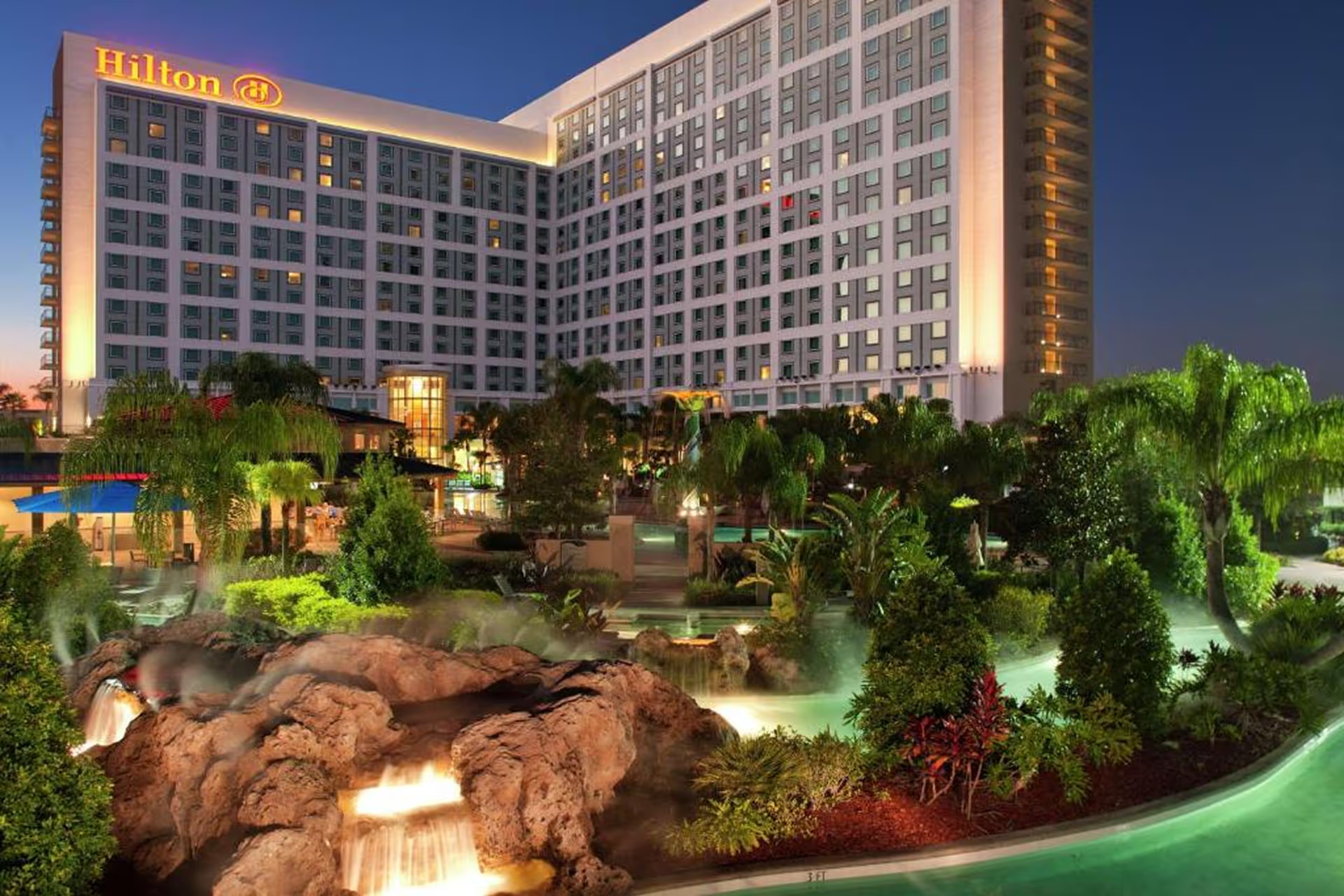Hilton Property Improvement Plans: What Owners Need to Know
.svg)
September 30th, 2025
.svg)
8 min.
Hilton Worldwide operates over 7,000 properties across 18 brands, representing one of the most diverse and innovation-focused portfolios in the hospitality industry. For Hilton franchise owners, Property Improvement Plans represent significant investment opportunities that can enhance property performance while ensuring alignment with evolving brand standards.
Hilton's approach to PIPs emphasizes guest comfort, technology innovation, and operational efficiency. The brand's "Connected Room" technology initiative, focus on guest workspace functionality, and commitment to sustainability have become central elements of modern Hilton renovation requirements. Understanding these priorities helps owners budget appropriately and plan renovations that deliver maximum return on investment.
Unlike some franchise systems, Hilton's PIP process offers some flexibility in implementation approaches while maintaining strict standards for final results. This flexibility allows owners to optimize costs and minimize operational disruption when working with experienced contractors who understand Hilton's requirements and approval processes.
This guide builds on our comprehensive Complete Guide to Hotel Renovations. For professional construction services, explore our commercial hospitality expertise.
Understanding Hilton's PIP Structure and Timeline
Hilton Property Improvement Plans typically occur on 6-8 year cycles, though timing varies based on property performance, guest satisfaction scores, and brand evolution. Hilton's assessment process evaluates both physical property conditions and operational compliance, with particular emphasis on technology integration and guest experience factors.
The PIP notification process begins with a comprehensive property assessment conducted by Hilton's franchise services team. This assessment generates a detailed scope of work document outlining required improvements, suggested timelines, and brand standard references. Most Hilton PIPs allow 12-18 months for completion, with milestone dates for design approval and construction commencement.
Key Timeline Milestones include initial design submission (typically 60-90 days from PIP issuance), design approval (additional 30-60 days), construction start deadline, and final completion date. Meeting these milestones is crucial for maintaining good standing with the brand and avoiding potential penalties or franchise agreement complications.
Hilton's approval process involves review by brand standards architects who evaluate designs for compliance with current brand guidelines. Working with contractors and designers experienced in Hilton standards significantly reduces approval time and minimizes costly revisions during the design phase.
Connected Room Technology and Digital Integration
Hilton's Connected Room technology represents one of the most significant recent innovations in hotel technology and has become a central component of many PIP requirements. This integrated system allows guests to control room functions through the Hilton Honors app, creating personalized experiences while providing operational benefits for hotel management.
Connected Room Components include smart thermostats, digital door locks compatible with Digital Key technology, integrated lighting controls, and entertainment system connectivity. The system requires robust WiFi infrastructure, compatible property management system integration, and staff training for support and troubleshooting.
Implementation Considerations extend beyond simply installing compatible devices. Properties must ensure adequate network bandwidth, power supply requirements, and integration with existing building management systems. The investment in Connected Room technology typically ranges from $1,500-$3,000 per room depending on existing infrastructure and chosen implementation approach.
Guest Benefits include pre-arrival room customization, mobile check-in and checkout, streaming entertainment options, and personalized comfort settings. Properties implementing Connected Room technology often report improved guest satisfaction scores and increased Hilton Honors engagement, contributing to stronger performance metrics.
Guest Room Standards and Design Requirements
Hilton guest room standards emphasize comfort, functionality, and workspace design. The brand's research into guest preferences drives specific requirements for bedding, lighting, furniture configurations, and amenities that vary by brand tier within the Hilton portfolio.
Bedding and Comfort Elements follow Hilton's Serenity Bed specifications, including premium mattresses, high-thread-count linens, and multiple pillow options. Lighting requirements include layered lighting designs with bedside controls, adequate workspace lighting, and ambient lighting that creates comfortable atmospheres.
Workspace Requirements reflect Hilton's understanding that many guests work from their rooms. Specifications include ergonomic desk chairs, properly sized work surfaces, convenient power outlet placement, and adequate task lighting. These workspace elements have become increasingly important in post-pandemic PIP requirements.
Bathroom Standards cover fixture specifications, accessibility compliance, and amenity presentations. Hilton requires specific shower systems, vanity designs, and mirror specifications that balance aesthetics with functionality. Many recent PIPs include requirements for walk-in showers with glass enclosures and upgraded fixture finishes.
Brand-Specific Requirements Across Hilton Portfolio
Hilton's diverse brand portfolio means PIP requirements vary significantly based on which flag your property operates under. Understanding your specific brand's standards is essential for accurate budgeting and design planning.
Select Service Brands including Hampton Inn, Home2 Suites, and Tru by Hilton emphasize efficiency and functionality with more standardized design packages. These brands often feature more prescriptive requirements but may offer cost advantages through streamlined specifications and approved vendor programs.
Full Service Brands like Hilton Hotels & Resorts, DoubleTree, and Embassy Suites require more extensive public spaces, food & beverage facilities, and meeting room capabilities. These PIPs typically involve higher costs per square foot but allow more design flexibility within brand guidelines.
Luxury and Lifestyle Brands including Waldorf Astoria, Conrad, and Canopy by Hilton demand premium materials, custom design elements, and enhanced service amenities. These renovations require specialized expertise and significantly higher budgets but target guests willing to pay premium rates.
Understanding how your specific brand positions within Hilton's portfolio helps set realistic expectations for PIP scope and investment requirements.
Sustainability Initiatives and Operational Efficiency
Hilton's corporate sustainability goals increasingly influence PIP requirements through the brand's Travel with Purpose program. Environmental considerations now affect material selections, energy systems, and operational equipment specifications across all Hilton brands.
Energy Management requirements include LED lighting systems throughout properties, energy-efficient HVAC equipment, and programmable thermostats in guest rooms. Many recent PIPs specify minimum energy efficiency ratings for major equipment and require installation of energy monitoring systems that track consumption patterns.
Water Conservation measures include low-flow fixtures in guest rooms and public areas, efficient laundry equipment, and landscaping designs that minimize irrigation requirements. Some markets face additional requirements for drought-resistant landscaping or water reclamation systems based on local environmental conditions.
Waste Reduction initiatives affect both construction processes and operational systems. Hilton increasingly requires bulk amenity dispensers rather than individual bottles, composting programs for food service operations, and recycling infrastructure throughout properties.
Properties that proactively embrace these sustainability requirements often realize operational cost savings that help offset renovation investments while appealing to environmentally conscious travelers.
Conclusion
Hilton Property Improvement Plans represent significant investments that position properties for long-term success within one of hospitality's most respected brand families. Understanding Hilton's specific requirements, technology initiatives, and approval processes enables owners to approach PIPs strategically rather than reactively.
The key to successful Hilton PIP completion lies in early planning, selection of experienced contractors familiar with Hilton standards, and proactive engagement with brand representatives throughout the design and construction process. Properties that view PIPs as opportunities rather than obligations often achieve renovations that drive improved guest satisfaction, operational efficiency, and revenue performance.
Hilton's emphasis on technology integration, particularly Connected Room capabilities, represents the future of hospitality experiences. Properties that embrace these innovations position themselves advantageously as guest expectations continue evolving toward personalized, technology-enabled stays.
For broader hotel renovation insights, explore our Complete Guide to Hotel Renovations covering all major brands and renovation strategies.







.avif)
